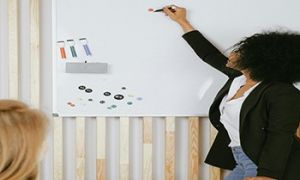Belonging, Being and Becoming: The EYLF lists ‘High Expectations’ as one of five Principles that underpin practice. This is based on the premise that all children come with the potential to learn and unique sets of abilities which can be best realized when educators consistently have high expectations for them. The following article provides strategies on how Educators achieve best practices so that each child can realise their potential.
Reflect On Inherent Bias
One of the biggest barriers to having high expectations for all children is certain inherent biases that educators may have about student outcomes based on ability, ethnicity, gender, socioeconomic status and race. Educators should thus consider that what they believe about children from certain social groups or genders may be biased because of traditional knowledge construction; they need to think critically about how power, discrimination and disadvantage intertwine to influence life outcomes for people. Only when educators consciously refuse to label learners on the basis of race, gender, socio-economic status, ability or other difference, can they truly expect each child to succeed.
Communicate High Expectations To The Children
It is not enough for educators to quietly hold the belief of each child’s potential and then just wait for that child to realize that potential. Instead, educators must consistently communicate their high expectations to children during the course of daily respectful and responsive interactions. By focusing on children’s strengths, offering encouragement for effort and setting challenging but achievable goals, educators can communicate that they believe in the child’s ability to succeed and will offer every support to make that happen.
Involve Other Stakeholders
The respectful professional standing of educators allows them to have significant influence over families of children. Thus educators should encourage parents to motivate their children and have high expectations for them, no matter how difficult their circumstances. Researchers have long known how deeply family and community expectations influence children’s perceptions of their ability as well as their actual outcomes2. The more support - in words and actions - children receive at home, the greater their chances of achieving positive academic and life outcomes in future. Similarly, educators have an important role to play in getting other professionals, like teachers in primary school, and the larger community to be more invested in giving children the best chances in life and learning.
Identify Children’s Strengths
One of the most effective ways that high expectations for every child can be realised is to plan learning based on each child’s strengths and interests besides promoting alternative ways of knowing and learning. Not all children learn at the same pace or are interested in the same things – indeed even the same child will get bored of the same kind of play materials after a few days. Educators thus should draw from different ways of knowing and learning and be open to trying different strategies. Similarly, they should respect the ways of living and learning in indigenous communities and other cultures and incorporate them into daily teaching practices so that children’s sense of being and belonging are strengthened. Above all, when they see children experiencing difficulty, instead of lowering expectations, educators should look for ways to provide additional or different support.
Provide Differentiated Learning Environments
A differentiated environment can be defined as a learning space that responds to children’s unique abilities, culture, perspectives, strengths and learning styles while also understanding the commonalities in children’s development3. This recognises that children have different learning styles and types of intelligence and thus need to be engaged with a wide spectrum of learning opportunities. For example, a literacy or science concept may be taught in different ways of learning ranging from oral, written, and auditory experiences to projects, experiments, and multisensory activities; in fact, each of these learning environments also needs to vary in difficulty so that each child is challenged and can experience success.
Yet another way differentiated learning can be adopted is through the tiered approach which involves offering children who need further development, a different focused tier of instruction. a small group of children engaged with vocabulary or professional working one-on-one with a child on numeracy concepts are examples of the differentiated tiered approach which has been found particularly beneficial for children who are at risk of learning and reading difficulties4. A project-based approach is again an example of a differentiated learning environment that can support diverse learners like children with special needs, behavioural issues or factors that put them at risk of academic failure. By involving them in curriculum planning and achieving academic results through multimodal learning, such differentiated learning environments motivate learners with various abilities, interests and learning styles.
Offer Strengths-based Feedback
Though tapping into children’s learning styles, abilities and interests is a great way to put high expectations into action, the enterprise remains incomplete unless their efforts and learning are assessed. And yet this has to be strengths-based rather than an exercise in fault-finding which is sure to run counter to communicating high expectations. One of the first things that educators can do is to understand the strengths of the children in their care and assess them on their individual growth rather than a comparison against their peers. Also when they give feedback appreciating the child’s effort rather than ability, the little learner’s sense of self-efficacy will grow, making them feel that they can achieve their goals with their actions.
Have High Expectations For Yourself
Finally, it is important that educators believe in their own ability and influence to have positive transformations on the young lives in their care. Research findings indicate that high educator efficacy has a positive impact on children’s outcomes5. At the same time, educators need to be supported in enhancing their sense of professional efficacy and this can happen with more opportunities for training, longer professional experience, better knowledge of theory about how children learn, having the philosophy that all children can learn as well as an environment that promotes sharing and conversations about theory with colleagues. All this is very important for administrators and services to note so that staffing resources and training can be optimized to give children the best chances of realizing their potential.
There is ample evidence that high expectations in the early years not just lead to better academic and life outcomes for students but improve agency and efficacy in educators too.
Further Reading
Building Relationships with Families and Co-Workers - This article will provide you with the most practical and useful strategies you can easily implement in your centre, to begin building positive relationships with families, co-workers and specialists in order to work together in building partnerships between childcare professionals and parents.
Forming Relationships With Children In Childcare - The following article provides information on Why Relationships Matter, Strategies To Implement When Building Relationships, Stages Of Social Development and more. However, for relationships to be meaningful, interactions need to be warm, caring and responsive.
Belonging, Being & Becoming Concepts Of The EYLF - Within the Early Years Learning Framework, there are three basic concepts that children’s lives are characterized by. They are Belonging, Being and Becoming. The following article provides information on each of their concepts.
Understanding EYLF - The following article provides information on the EYLF Outcomes, Belonging, bEing and Becoming, Principles and Practices.
References:
- Victorian Early Years Learning and Development Framework
- Benner, A.D., & Mistry, R.S. (2007). Congruence of mother and teacher educational expectations and low-income youth’s academic competence. Journal of Educational Psychology, 99(1), 140–153
- Schiller, P., & Willis, C.A. (2008). Using brain-based teaching strategies to create supportive early childhood environments that address learning standards. Young Children, 63(4), 52-55.
- Pullen, P.C., Tuckwiller, E.D., Konold, T.R., Maynard, K.L., & Coyne, M.D. (2010). A tiered intervention model for early vocabulary instruction: The effects of tiered instruction for young students at risk for reading disability. Learning Disabilities Research & Practice, 25(3), 110–123.
- Guo, Y., Piasta, S.B., Justice, L.M., & Kaderavek, J.M. (2010). Relations among preschool teachers' self-efficacy, classroom quality, and children's language and literacy gains. Teaching and Teacher Education, 26(4), 1094-1103.







 As an Educator in Australia, your pay rate falls under the Children’s Services Award 2010. This award states the minimum amount that an employer can
As an Educator in Australia, your pay rate falls under the Children’s Services Award 2010. This award states the minimum amount that an employer can When working as a qualified Early Childhood Teacher (with a university degree) within a service, your rate of pay will come from the Educational Services
When working as a qualified Early Childhood Teacher (with a university degree) within a service, your rate of pay will come from the Educational Services When working as a Diploma Qualified Educator your pay rate is from the Children's Services Award 2010. This Award states your minimum rate of pay
When working as a Diploma Qualified Educator your pay rate is from the Children's Services Award 2010. This Award states your minimum rate of pay When working as a Cert 3 Qualified Educator, your pay rate is from the Children's Services Award 2010. This Award states your minimum rate of
When working as a Cert 3 Qualified Educator, your pay rate is from the Children's Services Award 2010. This Award states your minimum rate of Educational Leaders play a crucial role in their early childhood service by ensuring that the educational program aligns with best practices and supports the holistic
Educational Leaders play a crucial role in their early childhood service by ensuring that the educational program aligns with best practices and supports the holistic In early childhood education and care, ratios are more than a technicality—they are a frontline safeguard. Every child deserves responsive supervision, emotional connection, and developmental
In early childhood education and care, ratios are more than a technicality—they are a frontline safeguard. Every child deserves responsive supervision, emotional connection, and developmental Here’s a comprehensive Mobile Phone and Smart Watch Policy tailored for early childhood education and care (ECEC) services in Australia, aligned with the latest 2025
Here’s a comprehensive Mobile Phone and Smart Watch Policy tailored for early childhood education and care (ECEC) services in Australia, aligned with the latest 2025 With the new national child safety reforms kicking in on 1 September 2025, early childhood services like yours have a real opportunity to lead the
With the new national child safety reforms kicking in on 1 September 2025, early childhood services like yours have a real opportunity to lead the The Sea of Fish Challenge is a national initiative that invites children, educators, families, and communities to create and display fish artworks as a symbol
The Sea of Fish Challenge is a national initiative that invites children, educators, families, and communities to create and display fish artworks as a symbol Across the early childhood education and care sector, educators are sounding the alarm: current staffing ratios are insufficient to deliver safe, meaningful, and developmentally appropriate
Across the early childhood education and care sector, educators are sounding the alarm: current staffing ratios are insufficient to deliver safe, meaningful, and developmentally appropriate


